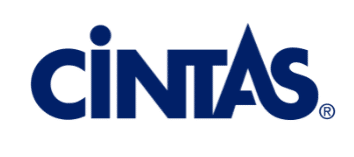Revolutionizing
Workplace Wellness.
Mindfully-crafted wellness offerings that cater to employers and employees and produce unrivaled results.
20+ Years of Experience.
A Lifetime of Change.
Uplifting workplace culture for employees and employers to reach their highest potential.
By engaging employees with our corporate wellness platforms, all aspects of your business reap the rewards. From specially developed health assessments to carefully crafted wellness strategies, our workplace wellness programs lower employee stress levels while helping employers reduce health costs.
The secret to a thriving wellness program lies in maximizing employee engagement. Recognizing that each company is unique, we take pride in developing tailored employer wellness programs that cater precisely to the distinct needs of your industry.
Experience the transformative power of our wellness programs and elevate your company’s well-being.
Support both people and profits with the benefits of wellness programs.
Why Choose Our Thriving Wellness Program?
With comprehensive services like health screenings, nutritional advice, physical activities, mental health support, and more, employers power employee engagement, productivity, and performance.
Managed on our proprietary wellness platform, every facet of our program is accompanied by valuable data and insights allowing us to understand where you are. With this, we deliver a wellness program that achieves tangible results and aligns with your goals.
Actionable Data & Insights
Access to data on workforce well-being empowers you to optimize your team’s potential, granting a significant advantage in human capital management.
By harnessing this valuable data, you gain insights into the most effective corporate wellness programs that successfully reduce workplace stress and proactively manage turnover, fostering a thriving, work environment.
Increased Productivity
Healthy employees are more productive employees– making workplace wellness a vital part of thriving businesses. In fact, companies report a 40-percent increase in productivity after implementing employee wellness programs.
Experience higher ascension per capita, fewer sick days, decreased complaints, and a happier, harder-working team. Everybody wins!
Reduced Expenses
Prioritizing your workforces well-being is a smart investment with a proven return. Your commitment to employee wellness leads to quicker hiring, talent retention, and reduced associated expenses.
You’ll witness lower health care costs while remaining compliant with industry standards, along with reduced unemployment, worker’s compensation, and disability claims.
Impactful Technology Solutions
Capture data and elevate participation with our user-friendly platform & mobile app
Moving to a better tomorrow means knowing where you’re at today. Tracking isn’t just a part of our approach; it’s a fundamental principle that bolsters participation.
Your progress is anchored in data, using our collected insights to lay the foundation for intelligent decision-making. Our commitment to using data to drive our strategies allows you to invest resources wisely.
Higher participation equals more preventive care, fewer emerging conditions for your employees, and substantially lower medical costs.
Take wellness digital and make health accessible for every worker.
- Prevent health issues & manage chronic disease
- Seamlessly track data & supercharge participation
- Gain real-time insights at your fingertips
- Minimize medical spending
On-site vaccine clinics for COVID-19, the flu, B-12, & more.
Streamlining the vaccination process has never been easier with our end-to-end services. We organize the events with our seasoned nurses overseeing the entire operation, ensuring a secure and efficient process that prioritizes safety above all else.
To encourage worker-wide participation, we offer more than traditional vaccinations, understanding some individuals may prefer alternatives. Our B12 injections empower your team to make choices that align with their values while still receiving the protection they need.
- Health risk assessments
- Comprehensive wellness events
- Rapid response & prevention to health crises
Third Wave Wellness
Energize your workforce with holistic wellness services that benefit everyone.
Grounded in science and based in nature, our Third Wave Wellness program brings invigorating services from KOI Wellbeing alongside our traditional offerings. Through innovative therapies, we craft an effective wellness program that seamlessly complements conventional services and raises your workforce’s quality of life.
Our programs offer mindfulness, insomnia treatment, and other alternative therapies for a spectrum of empowering options. When workers feel in control of their well-being, you’ll see higher rates of participation and a profound impact on your organization.
Experience the health benefits of an effective wellness program
- Improve physical health
- Embrace emotional well-being
- Empower healthy behaviors
- Thrive in a healthy lifestyle
- Ignite energy levels & morale
Empower your
team to thrive.
Skyrocket your workforce productivity by exploring the Discovery difference today!
PROUDLY SERVING THE BEST
Trusted By Industry Leaders











